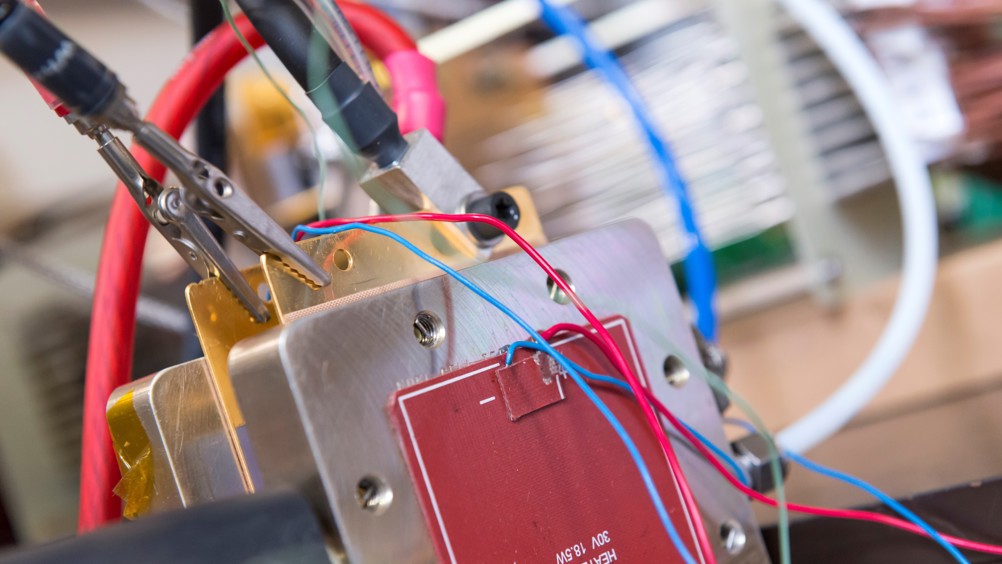
Imperial College London
Fuel cells are seen as a vital technology in decarbonising the transport sector, but until now have relied on catalysts made with platinum, one of Earth’s most scarce and expensive metals. Now, a pan-European team headed by Imperial chemists has created a catalyst using only iron, carbon, and nitrogen, elements which are abundant and cheap, and could make hydrogen fuel cells dramatically more competitive.
“Currently, around 60 per cent of the cost of a single fuel cell is the platinum for the catalyst. To make fuel cells a real viable alternative to fossil-fuel-powered vehicles, for example, we need to bring that cost down,” said lead researcher Professor Anthony Kucernak, from Imperial’s Department of Chemistry.
“Our cheaper catalyst design should make this a reality, and allow deployment of significantly more renewable energy systems that use hydrogen as fuel, ultimately reducing greenhouse gas emissions and putting the world on a path to net-zero emissions.”
A key innovation of the research was to produce a catalyst where all the iron was dispersed as single atoms within an electrically conducting carbon matrix. Single-atom iron has different chemical properties than bulk iron, where all the atoms are clustered together, making it more reactive.
These properties mean the iron boosts the reactions needed in the fuel cell, acting as a good substitute for platinum. In lab tests, the team showed that a single-atom iron catalyst has performance approaching that of platinum-based catalysts in a real fuel cell system.
As well as producing a cheaper catalyst for fuel cells, the new method could be adapted for catalysts in other processes such as chemical reactions using atmospheric oxygen as a reactant instead of expensive chemical oxidants, and in the treatment of wastewater using air to remove harmful contaminants. The work is published in Nature Catalysis.
“We have developed a new approach to make a range of ‘single atom’ catalysts that offer an opportunity to allow a range of new chemical and electrochemical processes,” said first author Dr Asad Mehmood, also from the Department of Chemistry at Imperial.
“Specifically, we used a unique synthetic method, called transmetallation, to avoid forming iron clusters during synthesis. This process should be beneficial to other scientists looking to prepare a similar type of catalyst.”